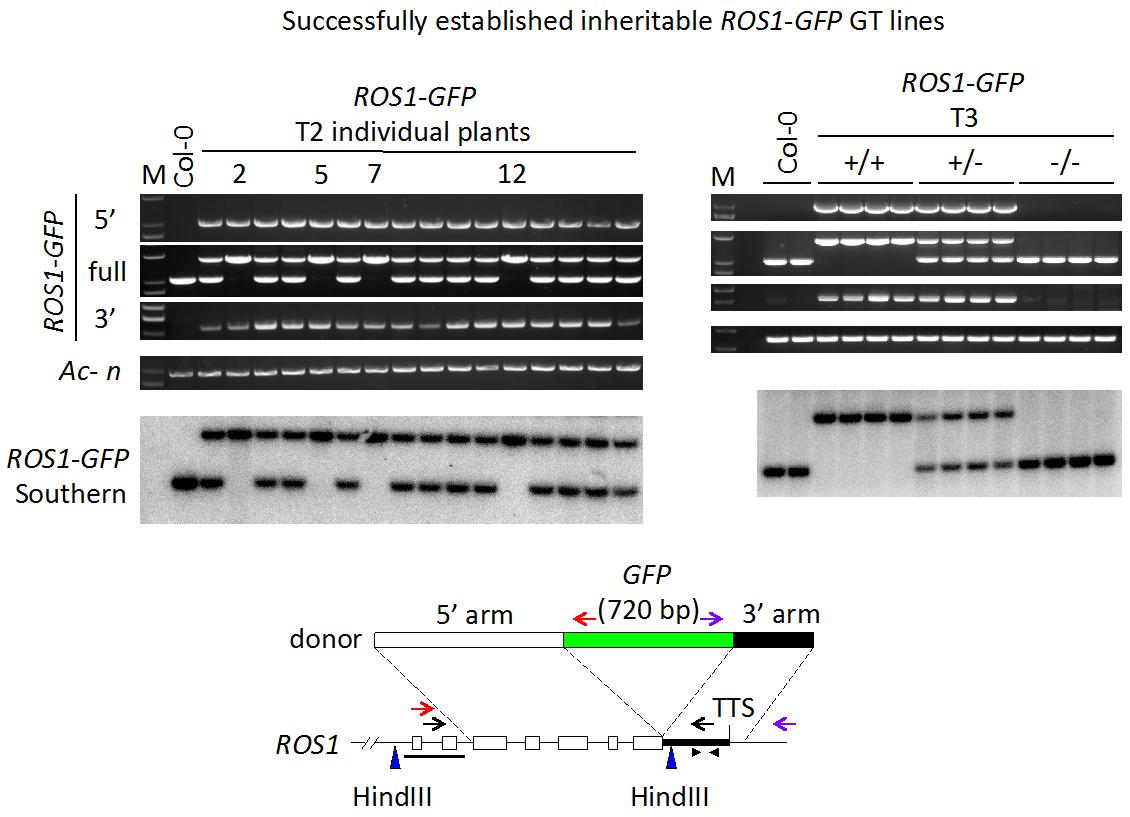CRISPR/Cas9-mediated gene targeting in Arabidopsis using sequential transformation
Precise genome modification such as knock-in and gene replacement via homologous recombination is a powerful tool and widely used in many organisms, including animals. And this gene targeting (GT) technology in mice won the Nobel Prize in Physiology or Medicine in 2007. However, GT is still very challenging task in higher plant species, because of low frequency of homologous recombination.
Nowadays CRISPR/Cas9 system is widely used to generate site-specific double strand breaks (DSBs) for genome editing in numerous organisms, including plants. These DSBs are repaired via error-prone non-homologous end-joining (NHEJ) or error-free homology-directed repair (HDR) when a homologous DNA donor is provided. Previously we reported that DSB by CRISPR/Cas9 could increase the efficiency of HDR in Arabidopsis (Miki et al., 2017), and CRISPR/Cas9-assisted HDR has been used for GT in various model systems, including human stem cells.
To generate a simple, efficient and selection marker-free method for seamless GT in Arabidopsis, the research group led by Prof. Jian-Kang Zhu from Shanghai Center for Plant Stress Biology, Chinese Academic of Sciences performed a “sequential transformation method” to achieve GT in parental Arabidopsis plants that already express Cas9 from a germline-specific promoter (DD45pro::Cas9). They used the Cas9-expressing plants as parental lines for new transformations with a construct containing: (i) HDR donor sequence, (ii) sgRNA targeting a genomic locus of interest, and (iii) a selectable marker for plants that are positive for the donor construct. They successfully obtained heritable and precise GT plants of in-flame fusion ROS1-GFP, ROS1-Luc, DME-GFP and GFP-DME, and amino acid substitutions in DME gene P1633A and F1648A as 5.3 to 8.3% efficiencies. Subsequent sequencing and functional analyses revealed that this GT method is precise and seamless for DNA primary sequence, and does not affect the functions of the proteins at the targeted genomic loci.
This work, entitled “CRISPR/Cas9-mediated gene targeting in Arabidopsis using sequential transformation”, has been published online in Nature Communications on May 17, 2018.
Article link:
https://www.nature.com/articles/s41467-018-04416-0
Contact:
Dr. Jian-Kang Zhu, Professor
Shanghai Center for Plant Stress Biology,
CAS Center for Excellence in Molecular Plant Sciences/Shanghai Institute of Plant Physiology and Ecology (SIPPE)
Chinese Academic of Sciences
Tel: 86-21-57078201
Email: jkzhu@sibs.ac.cn



